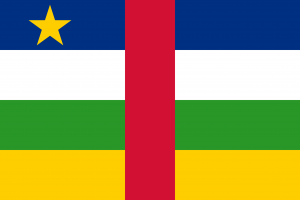Difference between revisions of "Language/Sango/Grammar/How-to-Use-Be"
m (Quick edit) |
m (Quick edit) |
||
| (2 intermediate revisions by the same user not shown) | |||
| Line 10: | Line 10: | ||
__TOC__ | __TOC__ | ||
<span link>Don't hesitate to look into these other pages after completing this lesson: [[Language/Sango/Grammar/Adjectives|Adjectives]] & [[Language/Sango/Grammar/How-to-Use-Have|How to Use Have]].</span> | |||
== The Verb "Be" == | == The Verb "Be" == | ||
| Line 80: | Line 82: | ||
|description=In this lesson, you will learn how to use the verb "be" in Sango properly, with examples and cultural information. Negation, questions and common greetings will also be covered. | |description=In this lesson, you will learn how to use the verb "be" in Sango properly, with examples and cultural information. Negation, questions and common greetings will also be covered. | ||
}} | }} | ||
==Other Lessons== | |||
* [[Language/Sango/Grammar/Future-Tense|Future Tense]] | |||
* [[Language/Sango/Grammar/Negation|Negation]] | |||
* [[Language/Sango/Grammar/How-to-Use-Have|How to Use Have]] | |||
* [[Language/Sango/Grammar/Pronouns|Pronouns]] | |||
* [[Language/Sango/Grammar/Give-your-Opinion|Give your Opinion]] | |||
* [[Language/Sango/Grammar/Plurals|Plurals]] | |||
* [[Language/Sango/Grammar/Adjectives|Adjectives]] | |||
* [[Language/Sango/Grammar/Questions|Questions]] | |||
* [[Language/Sango/Grammar/Conditional-Mood|Conditional Mood]] | |||
<span class='maj'></span> | |||
==Sources== | |||
* [https://polyglotclub.com/wiki/Language/Sango/Grammar/How-to-Use-Be Sango Grammar - How to Use "Be"] | |||
* [https://en.wikipedia.org/wiki/Sango_language Sango language - Wikipedia] | |||
* [https://polyglotclub.com/wiki/Language/Sango/Grammar/How-to-Use-Have Sango Grammar - How to Use "Have"] | |||
{{Sango-Page-Bottom}} | {{Sango-Page-Bottom}} | ||
<span links></span> | |||
Latest revision as of 22:18, 27 March 2023
Hi Sango learners! 😊
In this lesson, we will learn how to use the verb "be" in Sango. The verb "be" is used to connect two things in a sentence. We will learn how to use it properly, with examples and cultural information.
Don't hesitate to look into these other pages after completing this lesson: Adjectives & How to Use Have.
The Verb "Be"[edit | edit source]
The verb "be" in Sango has two forms: "ni" and "mbi". They are used differently, depending on the context of the sentence.
"Ni" is used as a copula. It connects the subject of the sentence to the predicate noun, which describes the subject. For example:
| Sango | Pronunciation | English |
|---|---|---|
| Sango ni seko | [saŋɔ ni sɛkɔ] | Sango is a language |
| Mama ni oyɛ | [mama ni ɔjɛ] | Mama is happy |
"Mbi" is used to express existence or location. For example:
| Sango | Pronunciation | English |
|---|---|---|
| Nga mbi ti? | [ŋa mbi ti] | Where are you? |
| Balanga mbi sala | [balanga mbi sala] | The Balanga are in the market |
Negation[edit | edit source]
To form a negative sentence in Sango, you can use the word "ti" before the verb. For example:
| Sango | Pronunciation | English |
|---|---|---|
| Ti ni koci | [ti ni kɔci] | Sango is not difficult |
| Ti mbi sala | [ti mbi sala] | They are not at the market |
Questions[edit | edit source]
To form a question in Sango, you can change the intonation at the end of the sentence, or add the question word "ti". For example:
| Sango | Pronunciation | English |
|---|---|---|
| Mə̀rə̀ ti tɛ̂? | [mərə ti tɛ] | Is Marie there? |
| Ti ni yɛ̂? | [ti ni jɛ] | Are you happy? |
Cultural Information[edit | edit source]
In Sango culture, greetings are important. They serve as a way to show respect and establish relationships with others. Here are some common greetings in Sango:
- Nga faagre? (How are you?)
- Nga ti sara? (What's your name?)
- Yango naye? (Where are you from?)
Let's see an example dialogue:
- Person 1: Nga faagre? ([How are you?])
- Person 2: Mbi sala. ([I'm at the market.])
To improve your Sango Grammar, you can also use the Polyglot Club website. Find native speakers and ask them any questions!
➡ If you have any questions, please ask them in the comments section below.
➡ Feel free to edit this wiki page if you think it can be improved. 😎
Other Lessons[edit | edit source]
- Future Tense
- Negation
- How to Use Have
- Pronouns
- Give your Opinion
- Plurals
- Adjectives
- Questions
- Conditional Mood
Sources[edit | edit source]
